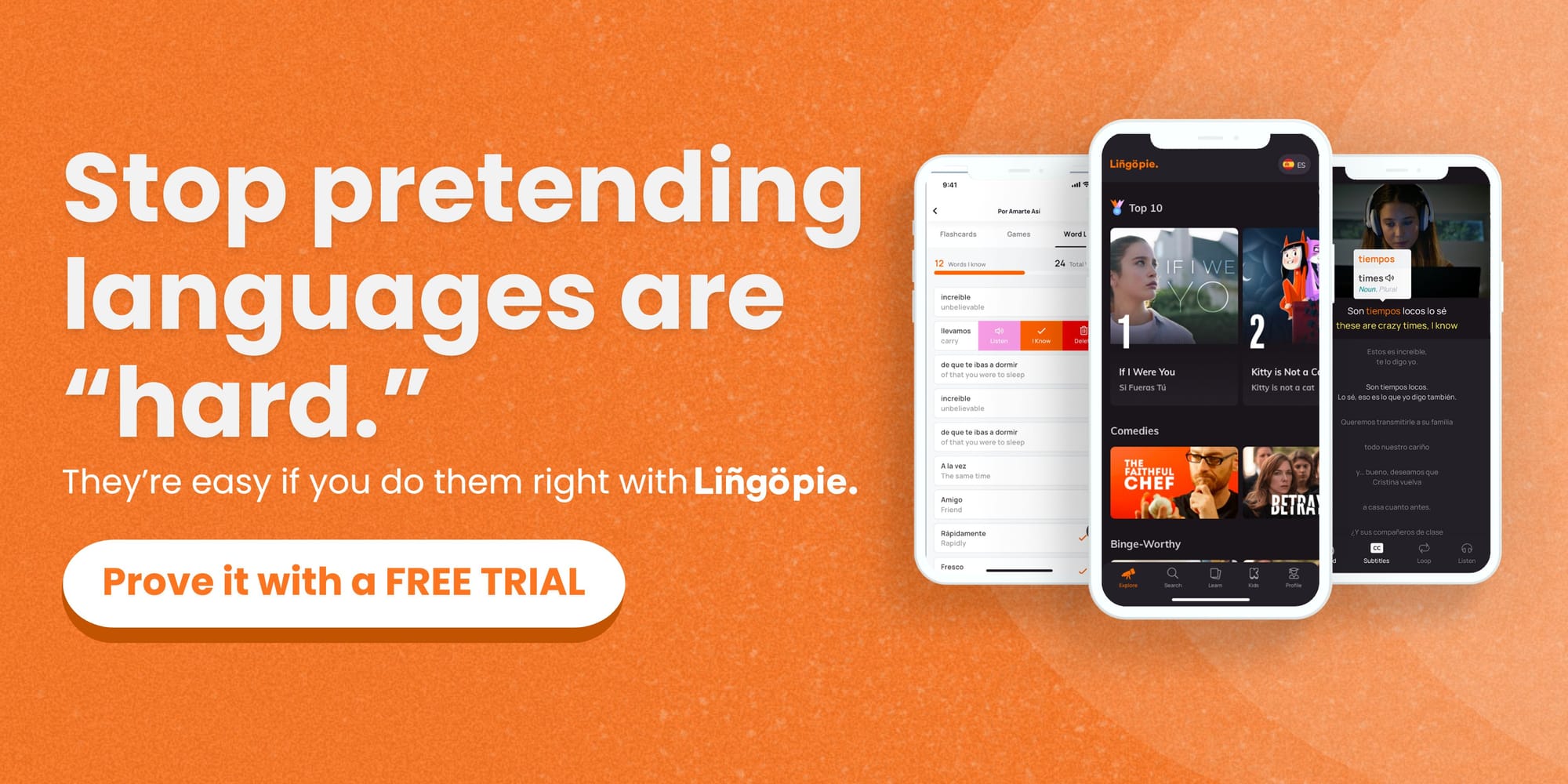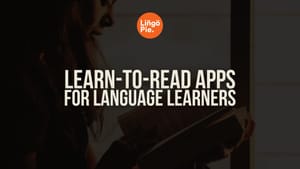Being in the industry for more than 5 years now, I know for a fact that language learning has changed a lot. Gone are the days when you had to fumble with CD sets or lug around heavy textbooks. Today, it's all about gamified language apps and AI tutors promising personalized lessons and faster fluency.
As someone who’s always hunting for the next breakthrough resource, I was intrigued when Talkpal AI landed on my radar. I’ve used my share of chatbot-style apps, and honestly, I wasn’t sure why I’d pay for AI conversations when tools like ChatGPT are free. Still, I gave it a shot because maybe Talkpal has something special.
In this review, I'll share what it’s like to use Talkpal AI, how it compares to other popular apps, and whether it’s worth your time (and money). I'll also do a head-to-head comparison with some popular alternatives to see how Talkpal AI stacks up against other popular tools.
- SpanishDict Review: Why Everyone Recommends It (But Should They?)
- LingQ Review: Is It Actually Good For Learning?
- Language Transfer Review: Strong Foundation but Can’t Replace Real Immersion

What Is Talkpal AI?
Talkpal AI is an AI-powered language learning platform focusing on actual conversation practice. Unlike other resources, it throws you into real-time discussions with an AI tutor powered by GPT technology. You can chat via text or voice about everything from ordering coffee to preparing for job interviews, while getting instant feedback on your grammar, pronunciation, and word choice.
Honestly, this approach makes sense for anyone who's moved beyond the basics but still freezes up during actual conversations. Talkpal AI seems designed for intermediate to advanced learners who know their conjugations but struggle to string together natural-sounding sentences under pressure.
After testing it myself, I can see the appeal—there's something refreshing about skipping the cartoon characters and baby steps to jump straight into discussions about weekend plans, debates, or travel experiences. However, if you’re a complete beginner still figuring out basic sentence structure, this might feel like being thrown into the deep end without floaties.
How Does Talkpal AI Work?

To use Talkpal AI, you just have to sign up, choose your target language, and land on a dashboard with seven different modes. Each one targets a specific skill: there's the basic Chat Mode, Roleplay for common scenarios, Debate for deeper topics, Sentence Mode for pronunciation, and even Character Mode where you chat with figures like Loki and Dracula (a bit gimmicky, but fun).
You can also try Photo Mode, where you describe images, or Call Mode for simulated phone conversations. Once you pick a mode, the app throws you straight into a conversation with its AI tutor.

As for me, I mainly used the regular Chat Mode to practice with Emma. When I tested it for Japanese, she greeted me in full Japanese—no English, no warm-up. You reply, get instant feedback, and continue the back-and-forth. It’s fast, direct, and great for immersion.
But if you’re a total beginner, be ready to lean hard on the translate button for every single response. While I know a bit of Japanese, I relied on the “suggest an answer” feature way more than I expected. I wanted to keep the conversation going, but half the time, I had no idea how to reply.
What I Liked About Talkpal AI
Massive Language Support

Talkpal AI supports over 57 languages, which is impressive—but not all of them feel equally well-developed. I tested the app in Tagalog, and right away noticed awkward translations and strange topic labels. One of the suggested categories was simply titled “happiness”, which feels vague and out of place for a conversation starter.
When I selected it, the AI responded with: “Paano magbabago ang ating buhay kung maaari tayong huminga sa ilalim ng tubig at galugarin ang kailaliman ng karagatan?” (“How would our lives change if we could breathe underwater and explore the depths of the ocean?”)

Grammatically, it’s fine, but it sounds overly poetic and unnatural, and not something you’d say in everyday conversation. Words like “galugarin” might show up in a textbook, but they don’t reflect real-world, spoken Tagalog.
Even my own message—“Hoy Emma! Tanungin mo ako ng isang masayang katanungan”—used “Hoy”, which is a very informal or even rude way to call someone out, especially if you’re not close. The Talkpal AI also didn’t offer any warning or correction about that!
All of this raises doubts about whether less common languages are getting the same attention to context, culture, and tone as more mainstream ones. For serious learners, that’s a real concern.
Interesting Modes

One thing Talkpal AI definitely gets right is its range of conversation modes. Instead of just sticking to small talk or flashcard-style drills, the app offers different ways to practice. The one that stood out most to me was Debate Mode. It pushes you to go beyond simple phrases and actually express opinions, explain your reasoning, and defend a point of view.
That said, while I like the concept, I’m still not fully convinced about the depth or accuracy of the AI’s responses in those debates. The prompts are interesting, but sometimes the AI feels a bit generic or vague in how it pushes the conversation forward. Still, it’s a much-needed step away from the “What’s your favorite food?” loop most apps get stuck in.
Accessible Anytime

Another big plus for Talkpal AI is its accessibility and convenience. The platform is available 24/7 on both mobile and desktop, so you can jump into a conversation whenever it fits your schedule. Whether you’re a busy professional squeezing in a 10-minute session between meetings or a traveler trying to practice on the go, that kind of flexibility is a major win.
It also creates a judgment-free space to practice speaking. You can make mistakes, repeat answers, and experiment with your phrasing without feeling embarrassed or rushed. That alone makes it easier to build confidence, especially if you're shy about speaking out loud in a new language.
What Should Be Improved
Lack Of Support For Total Beginners

One of the biggest challenges I faced as a beginner was the lack of in-conversation support. The AI jumps straight into your target language with no English guidance, which sounds immersive but quickly becomes overwhelming if you’re totally new to the language. I had to rely heavily on the “translate” and “suggest an answer” features, not because I wasn’t trying, but because I genuinely had no idea how to respond. There’s also no real onboarding to ease you into it.
It would be helpful if Talkpal AI offered more beginner-friendly tools, like optional English prompts, a slow mode, or even a basic guided tutorial before jumping into full conversations. Even something as simple as an on-screen phrase bank or keyboard shortcuts for non-Latin alphabets would make a huge difference for new learners.
Missing Script & Writing Support

If you're learning a language with a different writing system (like Japanese, Korean, or Arabic), you'll be surprised that Talkpal offers zero guidance on the script. There are no intro lessons on alphabets, character sets, or how to type in the language, which makes it tough to engage fully in conversations, especially if you can’t even recognize or input the characters.
Yes, Talkpal focuses on speaking and listening, but some basic script support or a quick writing-system primer would go a long way. Even a reference chart, typing tutorial, or visual overlay would make the app far more approachable for beginners tackling non-Latin scripts.
Limited Depth & Context

While Talkpal AI is great for getting you talking, the quality of the conversation can feel a little surface-level at times. The AI often gives generic or repetitive responses, which makes the back-and-forth feel a bit robotic, especially if you're expecting something closer to a real tutor.
It also tends to struggle with context in longer conversations. If you bring up something from earlier in the chat, there’s a good chance they won’t remember, which breaks the flow. For casual practice, it's fine—but if you're looking for deeper, more natural conversations or detailed feedback on your mistakes, using ChatGPT on your phone will be an even better option!
Gimmicky Characters

One of Talkpal’s more unique features is its Character Mode, where you can chat with historical or fictional personas. While the idea sounds fun, in practice, it feels a bit gimmicky. The conversations often rely on overly formal or scripted language that doesn’t reflect how people actually speak, especially in casual or modern contexts.
On top of that, the characters themselves lack real personality or depth. Their tone of voice doesn’t change, and responses often feel generic, vague, or a little too polished. It’s hard to feel like you’re having a “real” conversation with them, which kind of defeats the purpose. This mode probably won't add much value for learners looking to build confidence in natural, everyday speaking situations.
Limited Free Plan

It’s great that Talkpal AI offers a freemium model, but the free tier is extremely limited! With a free account, you get just 10 minutes of chat time per day. While that might be enough to test the waters, it’s barely enough to complete one decent conversation or build any real momentum, especially if you're trying to practice consistently.
For an app built around conversation, that time cap can feel frustratingly short. You’ll likely find yourself hitting the limit just as you're starting to warm up. If you're serious about learning, you’ll need to upgrade fairly quickly, so while it’s technically free to try, it doesn’t offer much value unless you're ready to pay.
Talkpal AI Review: Yay Or Nay?
Talkpal AI has some strong features, but it’s far from being the best language learning tool out there. Beginners may find the lack of guidance frustrating, and the AI’s responses can often feel repetitive, overly formal, or just plain unnatural (especially in lesser-supported languages like Tagalog). Some features also come off more like filler than truly effective learning tools.
If you're an intermediate learner who wants structured, low-pressure speaking practice and you're okay with some occasional weirdness in responses, Talkpal AI is worth trying (especially if your target language is one of the more popular ones).
But if you’re a complete beginner, or if you're learning a less common language, you might want to look elsewhere—or at least pair Talkpal with a more structured resource.
Talkpal AI Vs Other Apps

With so many AI-powered language apps on the market, it’s important to understand what sets Talkpal AI apart and where it falls short compared to other popular tools like Lingopie, Praktika, and Jumpspeak.
Below is a full breakdown of how Talkpal compares in key categories like language variety, speaking quality, natural tone, and overall learning experience.
| Feature / Need | Talkpal AI | Lingopie | Praktika | Jumpspeak |
|---|---|---|---|---|
| Speaking Practice | Strong (multiple free-form AI modes) | Strong (AI conversation + speech tools) | Strong (AI avatars for dialogue) | Moderate (guided speaking/chat practice) |
| Language Variety | 57+ languages | 13 major languages | Primarily focused on English | Focused on Spanish (and select others) |
| Media-Based Learning | None | Strong (TV shows, subtitles, games) | None | Minimal |
| Beginner-Friendly | Limited guidance, steep learning curve | Accessible with built-in subtitle support | Gentle onboarding and prompts | Structured, with low-pressure lessons |
| Natural Tone / Language | Mixed (can sound robotic or formal) | Natural and native-authored content | Generally natural tone via avatars | Usually natural but occasionally generic |
| Modes / Features | Debate, Roleplay, Photo, Sentence, Call | Watch & Speak, subtitle interactivity | Avatar chats, English fluency features | Roleplay prompts, guided lessons |
| Free Plan | Very limited (10 minutes/day) | 7-day free trial, full access | Free trial with feature restrictions | Limited trial, subscription required |
| Offline Access | Not available | Available for videos and episodes | Not available | Not available |
| Best For | Intermediate learners wanting conversation practice | Learners who enjoy TV and immersive content | English learners looking for casual AI practice | Beginners seeking structure and confidence |
Talkpal AI Vs Lingopie

If your main goal is developing speaking confidence and practicing conversations, Talkpal AI pulls ahead with its wide range of interactive modes and language support. However, Lingopie wins when it comes to overall balance, offering both immersive listening through real TV shows and solid speaking tools.
With more natural input, cultural exposure, and structured guidance, Lingopie provides a more well-rounded learning experience, especially for beginners and intermediate learners.
Talkpal AI Vs Praktika

While both apps focus on speaking, Praktika delivers a smoother and more engaging experience for English learners thanks to its avatar-led dialogues and friendly tone. The conversations feel more natural and less robotic than Talkpal AI, especially for beginners.
However, Talkpal is stronger for learners of other languages beyond English. So if you're learning English only, Praktika wins—but for other languages or more advanced speaking practice, Talkpal has the edge.
Talkpal AI Vs Jumpspeak

Jumpspeak offers a more structured, beginner-friendly approach, with guided lessons designed to help you feel comfortable speaking from day one. Its focus on real-world dialogue and confidence-building makes it ideal for nervous or new learners. Talkpal, on the other hand, offers more freedom and mode variety but lacks guidance.
For learners who want a supportive, structured path to fluency, Jumpspeak comes out ahead, especially for Spanish and other supported languages.
So, What's Next?
If you're serious about improving your speaking skills, apps like Talkpal AI show just how far AI language learning has come. With flexible modes, wide language coverage, and always-on access, it’s a solid tool, especially for intermediate learners who want to jump straight into conversation.
However, no language app is perfect. The key is finding one that fits your level, learning style, and goals. Try a few, test what works for you, and don’t be afraid to mix tools. If you’re curious where to start next, Lingopie is worth checking out. It’s fun, flexible, and gives you the context and confidence many apps still lack.




![What’s The Best Way To Learn Polish Quickly? [Guide]](/blog/content/images/2025/08/What-s-The-Best-Way-To-Learn-Polish-Quickly.jpg)




![Language Reactor Review: Why Lingopie Is The Better Choice for Language Learning [2026]](/blog/content/images/size/w300/2024/12/Language-Reactor-Review.jpg)